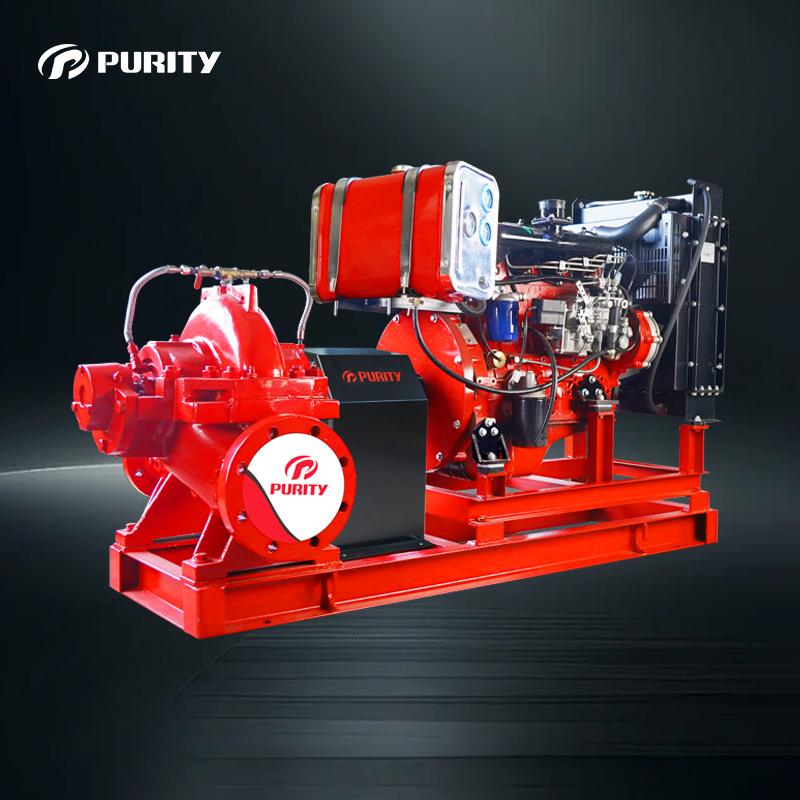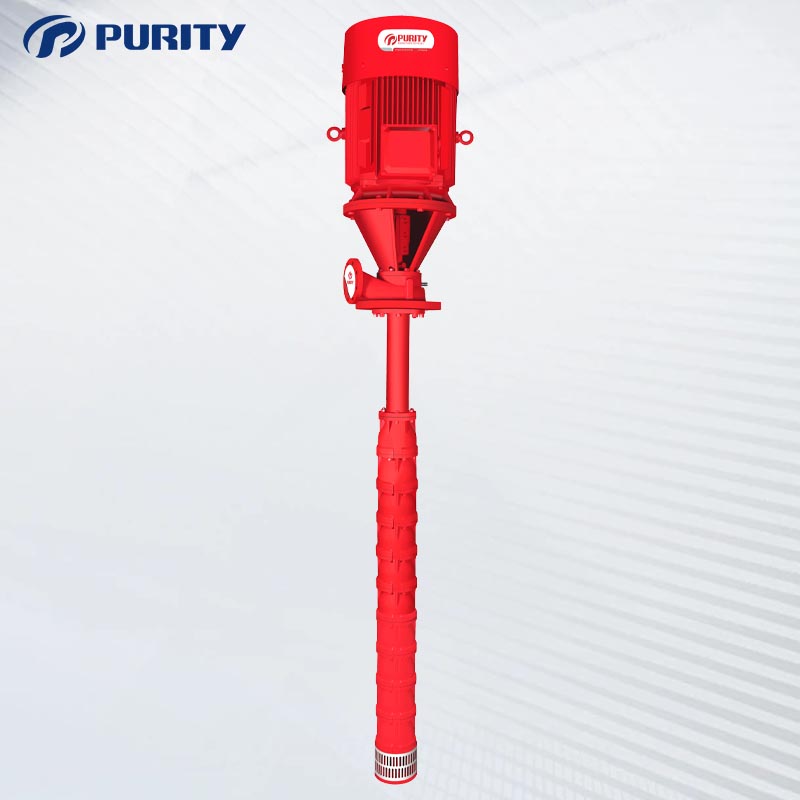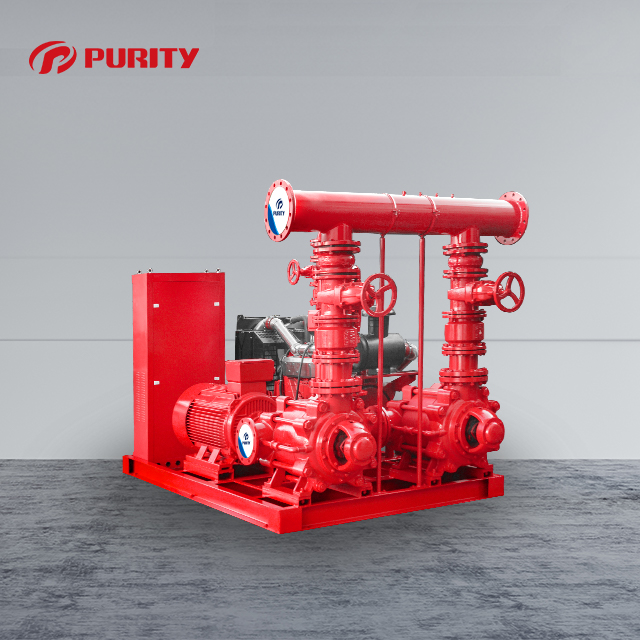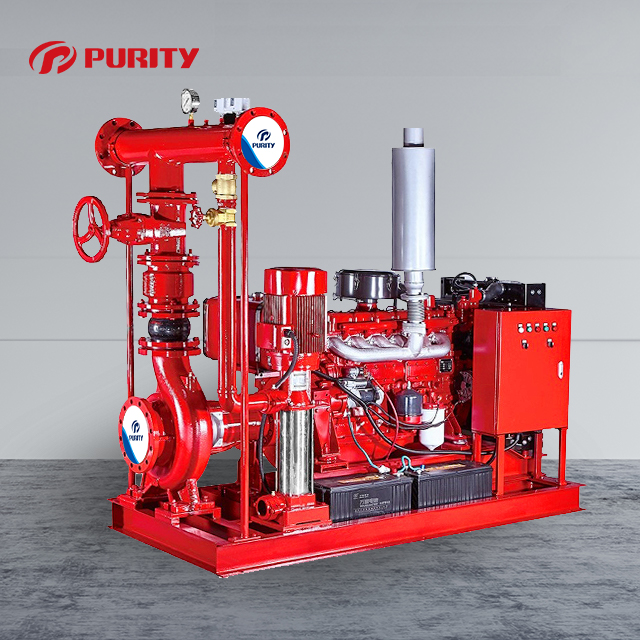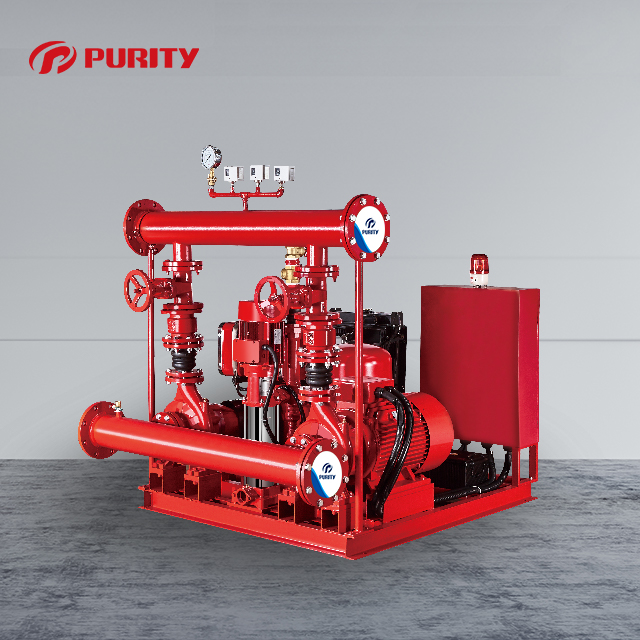A fire pump is a critical component of any building’s fire protection system. Whether in high-rise buildings, commercial complexes, or industrial facilities, fire pumps ensure that fire sprinkler systems and fire hydrants receive adequate water pressure. When municipal water pressure is insufficient or unavailable, fire pumps become the core equipment that guarantees effective fire suppression.
These pumps draw water from storage sources such as tanks, underground reservoirs, or lakes, and deliver it at high pressure to the fire protection system. Typically powered by electric motors or diesel engines, fire pumps automatically activate when they detect a drop in system pressure — for instance, when a sprinkler head opens due to fire.
However, not all fire pumps are the same. The correct pump type must be selected based on factors such as building layout, available space, and water source conditions. The reliability and performance of the fire protection system depend heavily on this choice. Let’s explore the four most common types of fire pumps, each with unique structural features and ideal application scenarios.
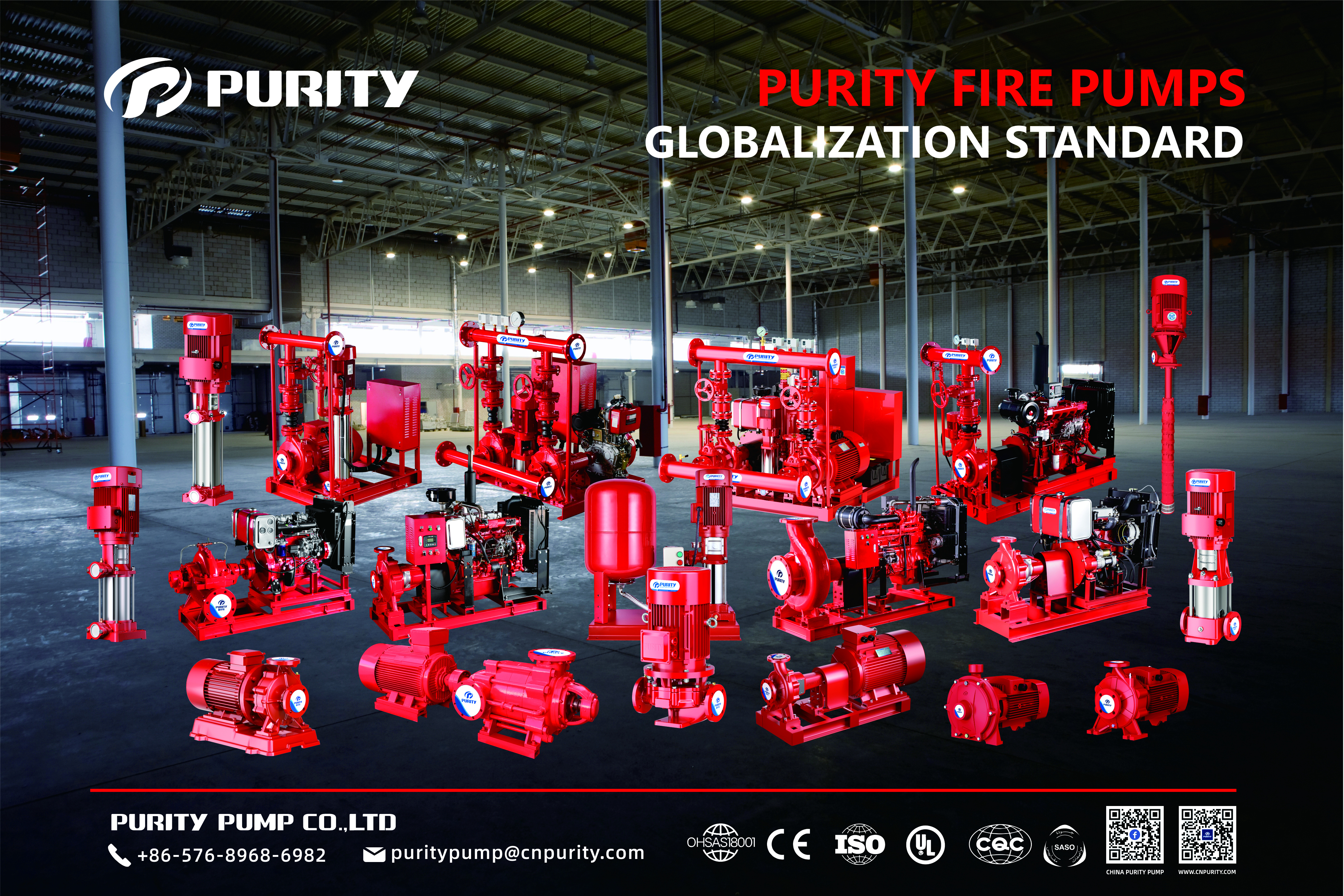
Figure | Purity Fire Pump Full Range
1. Horizontal Split Case Fire Pump
The horizontal split case fire pump is the most widely used type in modern fire protection systems. Its casing splits horizontally, allowing easy access to internal components like the impeller, shaft, and bearings. This design makes maintenance straightforward and efficient.
Key Features:
(1)High flow capacity and stable performance
(2)Long lifespan and durable construction
(3)Easy to maintain and repair
(4)Requires a positive-pressure water supply (e.g., water tanks or underground reservoirs)
This type is best suited for medium to large-scale buildings with enough space in the pump room. It’s a preferred choice for industrial and commercial facilities where a stable and high water flow is critical.
Figure | Purity Horizontal Split Case Fire Pump-PSCD
2. Vertical Fire Pump (Vertical In-line Fire Pump)
Also known as the vertical in-line fire pump, this type features a compact, vertical structure where the motor and pump are aligned along the same axis. It saves valuable floor space, making it ideal for buildings with limited mechanical room size.
Key Features:
(1)Space-saving vertical design
(2)Easy to install without requiring a special base
(3)Best for small buildings or tight installation spaces
However, maintenance can be more complicated, as the entire pump assembly often needs to be removed for inspection or repairs. This could lead to higher maintenance time and cost compared to other designs.
3. Vertical Turbine Fire Pump
The vertical turbine fire pump is specially designed to draw water from deep, non-pressurized sources such as wells, lakes, or underground tanks. Unlike other fire pumps, it doesn’t require a positive suction head and can lift water from deep below the ground.
Key Features:
(1)Ideal for non-pressurized sources like deep wells or lakes
(2)Strong suction and reliable startup performance
(3)Shaft length can be customized based on water source depth
(4)Commonly used in remote areas or locations without municipal water supply
The vertical turbine fire pump offers exceptional water-lifting capability and application flexibility, making it indispensable in rural or industrial settings where conventional water pressure is unavailable.
Figure | Purity Vertical Turbine Fire Pump-XBD
4. Jockey Pump
Although small and not directly involved in firefighting, the jockey pump (also known as a pressure maintenance pump) plays a vital role in the overall fire pump system. Its job is to maintain the system’s pressure during standby mode, preventing the main fire pump from unnecessary starts due to minor pressure fluctuations.
Key Features:
(1)Maintains normal system pressure
(2)Reduces wear and tear by preventing frequent main pump startups
(3)Improves overall system stability and response time
By keeping the system in a pressurized state, the jockey pump ensures the main fire pump activates only when truly needed, enhancing both longevity and reliability of the fire protection system.
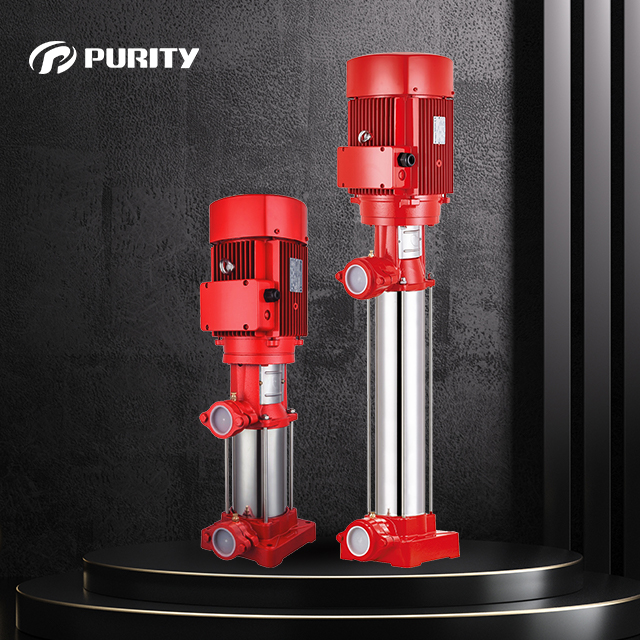
Figure | Purity Jockey Pump-PV
Why Choosing the Right Fire Pump Matters
Selecting the right type of fire pump is not just a technical consideration — it’s a matter of life safety and asset protection. If the wrong type is installed, or the setup is improperly designed, the system may fail to deliver sufficient pressure during a fire emergency, leading to uncontrolled fire spread and increased risk.
Before installation, factors such as equipment room space, water source conditions, building height, and applicable fire safety codes must all be carefully evaluated. Only by understanding these requirements and consulting with fire protection professionals can building owners ensure their systems meet all safety and performance standards.
Final Thoughts
Fire pumps are truly the “heart” of a building’s fire protection system. Whether you are overseeing an office tower, a retail center, or a factory, understanding the differences between horizontal split case fire pumps, vertical fire pumps, vertical turbine fire pumps, and jockey pumps will help you build a reliable and efficient fire suppression system.
Purity has been specializing in fire pump systems for over 15 years. Our products are certified by CE, UL, and other international standards. With a complete range of fire pumps, we are ready to be your trusted fire protection partner. Feel free to contact us for more information or project support!
Post time: Apr-19-2025

